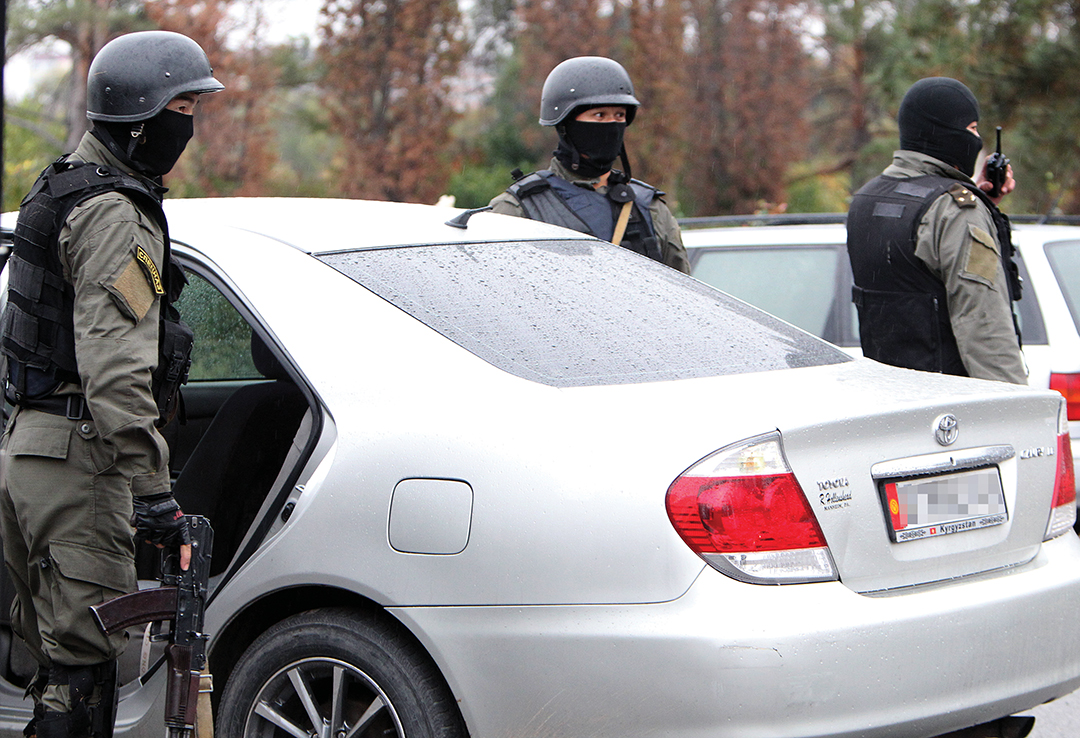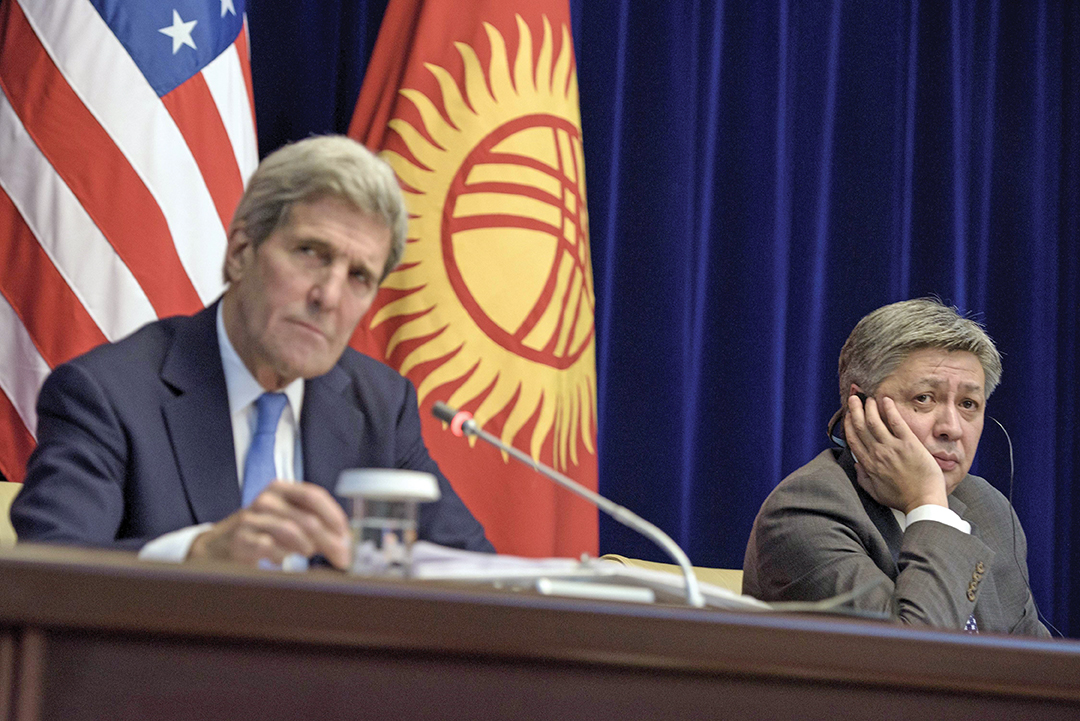The U.S. Department of Energy works with the Kyrgyz Republic to fight proliferation
By Bakyt T. Kakchekeev
The Kyrgyz Republic is committed to the peaceful development of all countries, supports the peaceful resolution of conflicts and opposes the use of force in international relations. One of the main aspects of international security is nonproliferation of weapons of mass destruction (WMD) and related dual-use technologies.
U.S. Department of Energy (DOE) programs were initiated in 2008 in the Kyrgyz Republic, within the framework of bilateral relations, to help fight the proliferation of WMD. The program’s goals are to establish a system of detection and prevention of nuclear weapons and technology transfers. The programs include training to recognize weapons technology and dual-use materials; identify and interdict WMD smuggling at state borders; utilize modern methods of investigation and interdiction of WMD; and create a system to prevent “intangible” transfers.

EPA
Since 2000, the U.S. government has promoted the Cooperative Threat Reduction (CTR) program, also known as Nunn-Lugar, in the non-nuclear states of the former Soviet Union. Before 2000, the CTR successfully operated in the Russian Federation, Belarus, Kazakhstan and Ukraine, but was expanded to prevent horizontal proliferation of WMD and dual-use technologies.
- The Kyrgyz Republic and the U.S. signed a number of key policy documents in this area:
- The memorandum on joining the Proliferation Security Initiative in the fight against the proliferation of weapons of mass destruction, PSI-2005 WMD.
- The memorandum on implementation of the system of export licensing “Trekker” in 2006.
- The program to combat illicit trafficking in nuclear materials in 2007.
- The memorandum on the prevention of illicit trafficking of nuclear and other radioactive materials in 2008.
These documents were designed to reduce the risks of intrusion and unauthorized circulation of WMD and dual-use components through the Kyrgyz Republic. To create the basic legislation, several U.S. government agencies, including the Defense Threat Reduction Agency (DTRA) of the U.S. Department of Defense, the U.S. Department of Commerce and the U.S. Department of State assisted in the adoption and promotion of the law on export controls in the Kyrgyz Republic in 2003. The basis of the bill was developed by DTRA’s experts for Russia in 1995 and was adopted with minor modifications by the Parliamentary Assembly of the Commonwealth of Independent States as model legislation.
In addition to the DTRA, a number of other U.S. government agencies actively worked to reduce the WMD threat in the Kyrgyz Republic, including the U.S. DOE’s National Nuclear Security Agency (NNSA), which worked jointly with the U.S. Department of Defense and the State Department. Among the most interesting programs are the Second Line of Defense (SLD) and the Global Threat Reduction Initiative (GTRI)/Defense Nuclear Nonproliferation and Radiological Security programs. These programs are similar to a program to control the sources of radiation, the Radiation Sources Regulatory Partnership (RSRP) — a program of the U.S. Nuclear Regulatory Commission, which has just begun.
Second line of defense
The goal of SLD is to strengthen export controls and prevent WMD smuggling. The program establishes a system of radiation portal monitors (RPM) at Kyrgyz border crossings. Under the SLD program, RPMs were installed at nine customs checkpoints by 2011 and six more in 2015, including at the Manas and Osh international airports, the Kaindy, Shamaldy Sai and Kara Suu railway entry points and the Kyrgyz Customs Center for Training and Retraining.
The U.S. DOE trains Kyrgyz border officers on the operation of the RPMs, how to detect nuclear smuggling and standard operating procedures. The SLD operates under the framework of the 2008 Memorandum on the Prevention of Illicit Trafficking of Nuclear and Other Radioactive Materials. Through the SLD program, the Kyrgyz Republic’s State Customs Service receives annual funding estimated at $1.5 million to $2.5 million. AECOM Technology Corp. and Orion Group International Inc. have managed the program under contract with the U.S. DOE since 2008. Locations of future project sites are determined by the NNSA and the leadership of Kyrgyz Customs.

Defense Nuclear Nonproliferation Radiological Security Program
Known as the Global Threat Reduction Initiative (GTRI) until 2015, the program operated under the framework of the memorandum of understanding on the prevention of illicit trafficking of nuclear and other radioactive materials of 2008, administered in the Kyrgyz Republic by the Ministry of Health and managed by the Battelle Memorial Institute, an American company.
The program aims to reduce the risk of proliferation of nuclear and radiological materials, including highly enriched civilian material. It establishes a system of physical protection and control over the use or storage of nuclear and radiological materials. Under GTRI, physical control of nuclear materials was established in 2011-2013 in some parts of the Kara Balta mining-metallurgy complex and at the Republican Oncology Centre in Bishkek. In 2014, the system for physical control of radiological materials had to be reworked at the oncology center, due to the failure of the previous system, and a new system was also established at the Kyrzhilkomunsoyuz hazmat waste storage site.
The program initially seemed to have weak project management organization, indicated by the fact that some of the 2011-2013 projects had to be redone by Batelle, and there was a new tender for the Kyrgyz part of the project in 2014.
Conclusion
Reducing the threat of the use of nuclear weapons and WMD, regardless of type — classical, improvised or radiological — is essential for peace and the survival of humanity. Any new use of nuclear weapons will lead to a change of attitude toward this most dangerous means of destruction and increase the chances of even more use. Controlling the direct use of materials, preventing horizontal proliferation and strengthening international nonproliferation regimes are as important as ever, as is cooperation between the Kyrgyz Republic and the U.S. in this field.
Progress in cooperation is supported by a number of political documents between the parties. However, implementation of U.S.-sponsored programs, in particular by the U.S. DOE, are controversial. In addition to budgetary waste, the programs suffered shortsightedness and lack of understanding of the local context and of the program goals and objectives. U.S. DOE program funding in the Kyrgyz Republic could decrease due to the U.S. budget deficit and changes in U.S. foreign policy priorities. Even efficient programs will suffer.
The level of self-sufficiency to operate and further self-support and develop existing systems will not be achieved by the government of the Kyrgyz Republic. Constant changes in which government bodies are responsible for nuclear safety in the Kyrgyz Republic won’t bring clarity and efficiency to the DOE program. However, the July 2015 denunciation of the 1993 Treaty on the Promotion of Cooperation between Kyrgyzstan and the United States will not complicate the work of the DOE programs because there is a sufficient legal framework for further cooperation on WMD export control.


Comments are closed.